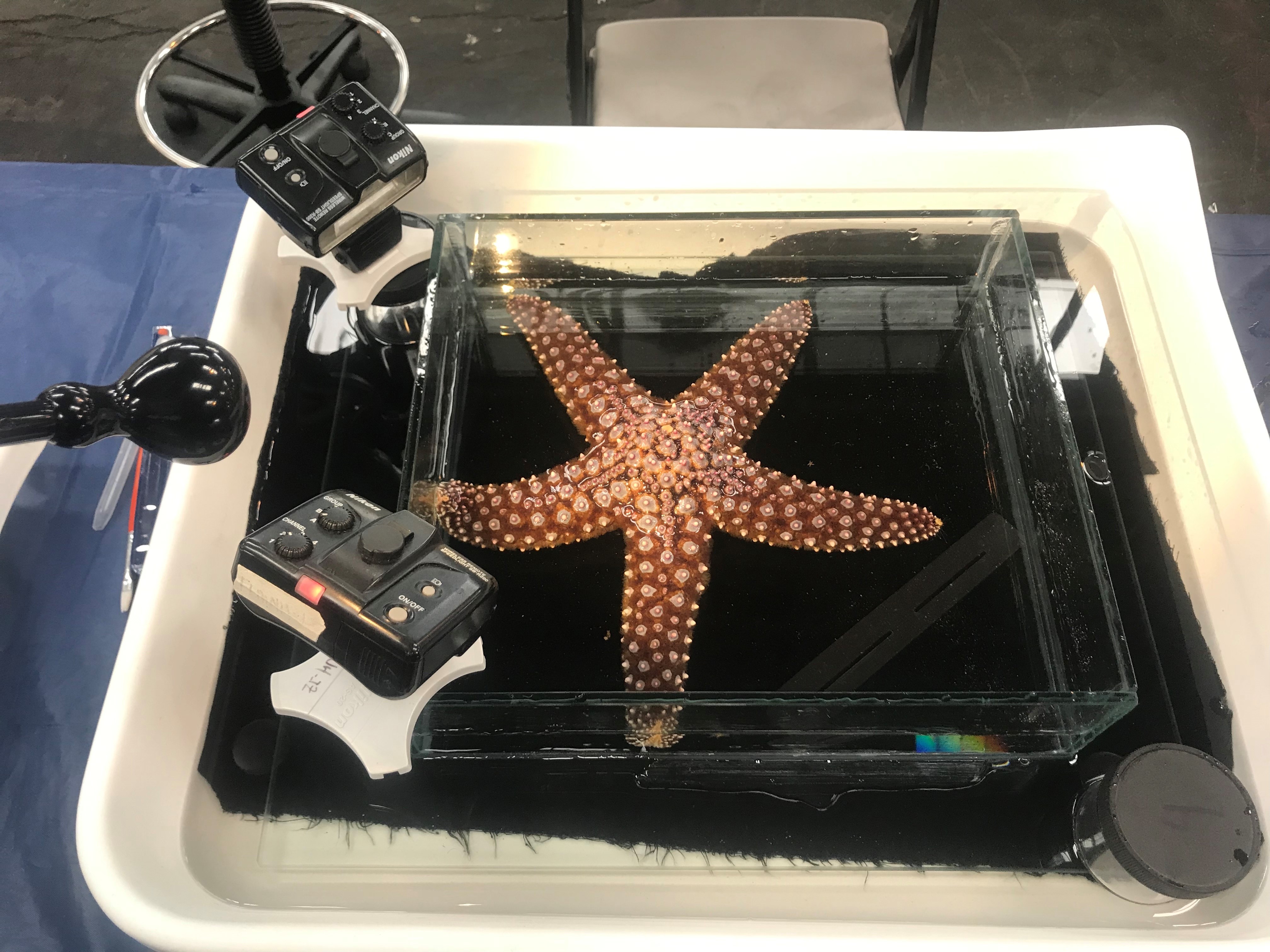Video provided by www.hakai.org.
Last week I was in sunny Los Angeles for the third and final west coast invertebrate “bioblitz” of the summer — the LA Urban Ocean Expedition (LAUOE). While the LA scenery was certainly different from home, the work I did there was a continuation of my previous work helping other marine scientists catalog invertebrate biodiversity here in the Puget Sound region. This work is crucial for documenting species before they disappear. The event also gives us an opportunity to communicate to the public just how important invertebrates are to the healthy function of marine ecosystems.
Bioblitz selfie! I had just settled in at my microscope station. Working alongside some of the West Coast’s expert taxonomists for a week was an incredible experience
Crack the code
Our marine scientists held a similar bioblitz this past spring, where we collected and identified as many live sediment-dwelling invertebrates as possible from Puget Sound. “DNA barcoding” events like these are happening all over the U.S. and worldwide. Washington, Oregon, and California are just the latest to join in the effort.
During a bioblitz, tiny pieces of tissue are taken from each animal collected. These tissue samples will be sent to the Smithsonian Institute, where DNA will be extracted and analyzed to determine a unique genetic sequence for each species. The resulting DNA barcodes will be added to a global biodiversity library that taxonomists like me can use to identify species and determine if species are new to science — including undescribed species from Puget Sound! We can use this information to better understand how invertebrate communities respond to environmental stressors, like those associated with climate change.
Under the microscope
Daily operations are continuing for the rest of this week at the AltaSea facility at the Port of LA, where a pop-up lab is staged with flow-through saltwater systems, microscope stations, and docks for dive boats to pull up with fresh specimens. Taxonomists from all over the country were invited to participate, so I felt very fortunate for the opportunity to learn from them about the intertidal invertebrates of Southern California. Some species were familiar, but many aren’t found as far north as Washington, so this gave me a bit of a challenge. One of the highlights was having a worm I identified — the Sandcastle Worm, Phragmatopoma californica — win a “Species of the Day” contest!
Select image to visit our related Flickr album.
Reaching out
LAUOE is sponsored and organized by staff from the Natural History Museum of Los Angeles County. They invited school groups, community members, and business professionals to meet ocean scientists, tour the lab, and even touch and sort live critters.
Many people living in urban environments don’t realize how many amazing animals live right at their doorstep. Engaging the public in these types of events fosters an appreciation for the natural world that can later translate into more successful conservation efforts.
Eyes Under Puget Sound



